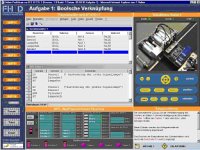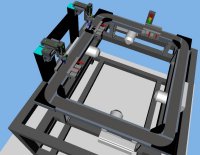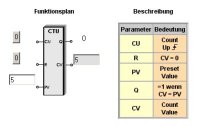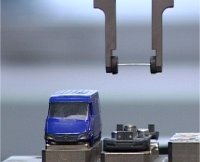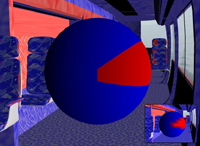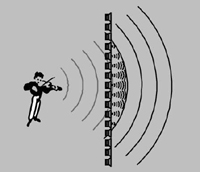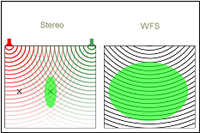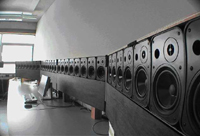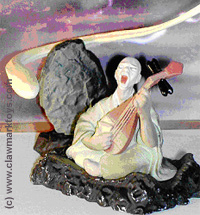|
||||||||||||||||||||||||||||||||||||||||||||||||||||||||||||
| Multi-Screen-Installation: Duesseldorf | ||||||||||||||||||||||||||||||||||||||||||||||||||||||||||||
| Prof. Dr. Welkert-Schmitt
|
||||||||||||||||||||||||||||||||||||||||||||||||||||||||||||
| The multi-screen installation Duesseldorf has utilized high technology to present life in the city, which is the state capital of Northrhine-Westphalia: | ||||||||||||||||||||||||||||||||||||||||||||||||||||||||||||
 |
||||||||||||||||||||||||||||||||||||||||||||||||||||||||||||
| Using the latest 3D technologies, virtual sets, animations and video projections (along with specially composed audio tracks, some in surround sound), information about Duesseldorf and events in the field of science is being presented in a variety of ways and media formats in a multi-screen installation running several large screens alongside each other and / or making use of single screens at the same time. | ||||||||||||||||||||||||||||||||||||||||||||||||||||||||||||
 |
||||||||||||||||||||||||||||||||||||||||||||||||||||||||||||
| Besides images of the virtual and real city of Duesseldorf, large-format images of people from different countries are also being presented. People who reflect on their lives, their studies and / or scientific work and who also reveal their personal motivations. This creates an emotional link to the individuals and through them to Duesseldorf while also establishing a technical and dramaturgical counterbalance to the stylized 3D models. The multi-screen installation displays an unusual combination of virtual and real elements and consequently draws viewers into the stories. | ||||||||||||||||||||||||||||||||||||||||||||||||||||||||||||
 |
||||||||||||||||||||||||||||||||||||||||||||||||||||||||||||
| Various layers of information and storytelling overlap or complement each other in, for instance, a variety of different storylines. The installation's effect is no longer exclusively achieved through the films and the reality they reflect, but also through the combination of the different forms of presentation and what viewers associate with them. | ||||||||||||||||||||||||||||||||||||||||||||||||||||||||||||
| The principle underlying how the project has been organized only gradually reveals itself to viewers and therefore triggers different subjective impressions and sensations that are aimed at underpinning the intended messages and statements. | ||||||||||||||||||||||||||||||||||||||||||||||||||||||||||||
 |
||||||||||||||||||||||||||||||||||||||||||||||||||||||||||||
| The multi-screen installation Duesseldorf is breaking new ground by using innovative technologies to communicate information and presentation contents as impressively as possible. The simultaneous nature of the virtual design aspects, 3D elements, spatial audio, the over-dimensional multi-screen displays and the corresponding contents about Duesseldorf supplements the DVD: "Touch the Future" about Northrhine-Westphalia as a location for the sciences. | ||||||||||||||||||||||||||||||||||||||||||||||||||||||||||||
|
|
||||||||||||||||||||||||||||||||||||||||||||||||||||||||||||
| Prof.
Dr.-Ing. Langmann |
||||||||||||||||||||||||||||||||||||||||||||||||||||||||||||
|
|
||||||||||||||||||||||||||||||||||||||||||||||||||||||||||||
|
||||||||||||||||||||||||||||||||||||||||||||||||||||||||||||
|
Virtual Environment of the People Cargo Mover – An Innovative Transport System |
||||||||||||||||||||||||||||||||||||||||||||||||||||||||||||
| Prof. Dr. Eng./Univ.
of Tsukuba Herder |
||||||||||||||||||||||||||||||||||||||||||||||||||||||||||||
 |
||||||||||||||||||||||||||||||||||||||||||||||||||||||||||||
| The "People-Cargo-Mover" (PCM) is a high speed train, which runs on a stretch built on the centre strip of motorways. The PCM runs at the side, enabling traffic in both directions. The PCM is applicable for public transport in local and long-distance traffic as well as for cargo. Visualization, combined with techniques of virtual reality, produces an interactive presentation at high level. | ||||||||||||||||||||||||||||||||||||||||||||||||||||||||||||
|
||||||||||||||||||||||||||||||||||||||||||||||||||||||||||||
| The Art and the Science of Audio: | ||||||||||||||||||||||||||||||||||||||||||||||||||||||||||||
| Wave Field Synthesis as a Next Generation Technology for Audio Applications | ||||||||||||||||||||||||||||||||||||||||||||||||||||||||||||
| Prof. Dr.-Ing.
Leckschat |
||||||||||||||||||||||||||||||||||||||||||||||||||||||||||||
|
||||||||||||||||||||||||||||||||||||||||||||||||||||||||||||
|
||||||||||||||||||||||||||||||||||||||||||||||||||||||||||||
| Contact | ||||||||||||||||||||||||||||||||||||||||||||||||||||||||||||
| Fachbereich
Medien, FH Duesseldorf, Jens Herder Tel: +49 (211) 4351-810 Fax: +49 (211) 4351-803 email: herder_AT_fh-duesseldorf.de www.medien.fh-duesseldorf.de |
||||||||||||||||||||||||||||||||||||||||||||||||||||||||||||
| Address | ||||||||||||||||||||||||||||||||||||||||||||||||||||||||||||
|
||||||||||||||||||||||||||||||||||||||||||||||||||||||||||||

